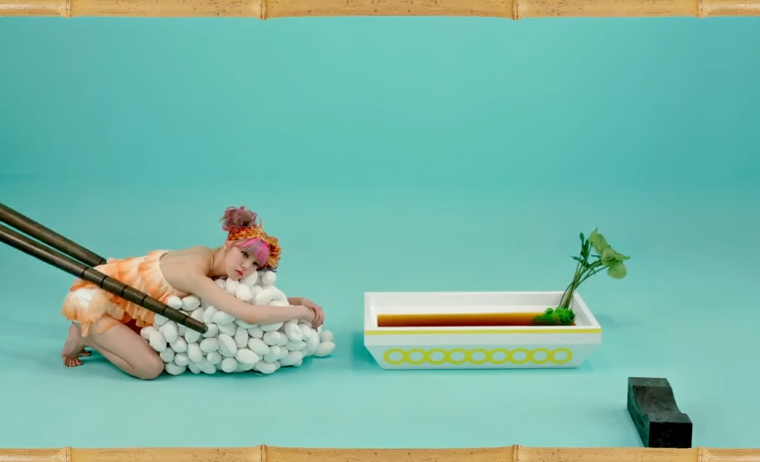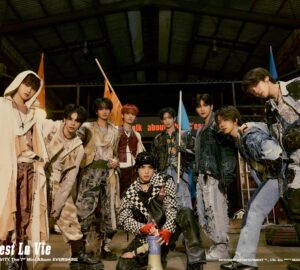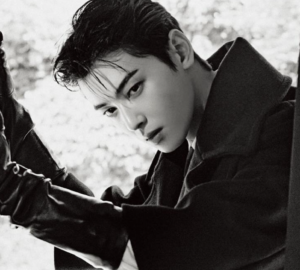Tired of the constant barrage of girl groups executing gun gestures or boy groups exposing abs? Longing for more wholesome and mindless K-pop? Let me tell you, there was an era of K-pop where the boys sang about overnight sleepovers and girls sang about… jumping. Here are three acts that prove that will bring you back to a time when K-pop was wholesome, carefree, and silly, and people loved it.
1. Crayon Pop
Now, this is one K-pop group that totally and already had the quirky, novelty concept down to a tee from the start. The Crayon Pop story really begins as early as 2011 when a photographer saw T-ara’s music video for their retro hit Roly-Poly and thought he should create a K-pop group. And just like that, the photographer Huang Hyungchang established Chrome Entertainment and created the company’s first group, Crayon Pop. While CEO Huang was forming his first girl group, he explicitly included in the qualifications that the girls who will compose his group cannot be taller than 165cm and must not have a girl crush or sexy image.
Crayon Pop did not really create a splash in both their Korean and Japanese debuts. While this was a bit expected since the group was virtually unknown and the company did not have any public name recall, what was concerning was that the first release allegedly cost the company almost all of its financial resources. But armed with big balls, CEO Huang gave the girls another go with a second release, which still didn’t send fans abuzz, though three things happened during this: One, the group caught the attention of Super Junior‘s Shindong, who said if he was going to make a girl group, he would copy the Crayon Pop Model and two, the group sold out not one, not two, but three shows in Japan. Finally, the third event that gave a bit more attention to the group was their guerilla style of promoting their single Dancing Queen, which saw them conduct busking performances in the streets of Seoul in the winter months. Yep, the girls in school uniforms with tracksuits performed in the cold to promote their song and the group in general.
After the unexpected discovery of the group’s popularity in Japan, the group would finally experience success in their home country as they would release the song that was to be the highlight of their career – Bar Bar Bar. Everything sort of conspired to help Crayon Pop finally achieve their breakthrough – a great song, simple but catchy choreography, the quirky costume of the helmet that everybody, particularly the pajussis — the old uncles that would compose the core of Crayon Pop‘s fandom, would wear. There was also the recognition from the industry and international fans, plus the local fans noting the girls’ hard work in promoting their second single in the biting cold. Plus the fact that Chrome spent less than US$400 for the music video of Bar Bar Bar, which was shot in an abandoned theme park and a music studio while the girls returned with millions in sales guaranteed the company a huge raking of profits.
Happy 10th Anniversary Crayon pop🤍.
19.July.2012❤️#Crayonpop #크레용팝 #CRAYONPOP10THANNIVERSARY pic.twitter.com/w0yYJmRrhY
— Risa (@Risaworld_4) July 19, 2022
The group continued its success with equally catchy releases of Uh-ee and FM that brought back the girls in what was going to be their signature — very memorable costumes and headgear. The success of the group was so massive that it caught the attention of international star Lady Gaga who recruited them to be her front act in a US concert. Alas, like most groups, the group’s popularity waned for the two usual reasons: One, a member has gotten her fill of the idol life and wants a change in lifestyle, career direction, or a fresh start like getting married or starting a family. In Crayon Pop‘s case, it was Soyul who eventually got married to Moon Heejun of the pioneering K-pop group H.O.T and had her baby months later. Two, there was a change of image in 2016 as Doo Doom Chit was still a lively and catchy track, but the girls went with a more modern K-pop look, ditching their gimmicky but effective helmets and hoods.
So, while the group has not officially disbanded, it is highly unlikely that they will ever stage a comeback as the members had branched out into other careers and public interest has waned for a group reunion. Besides, it has become public knowledge that the girls didn’t earn that much even at the peak of their popularity. Apparently, the company told them that they are indebted to the company as they still got “supported” them even as they went to other countries to perform. So, for example, the company cited their Lady Gaga project that did not allow them to do activities in Korea as they were in the US, which the company considered as a lost opportunity to earn income and profit. Now that most of the girls are earning way better with their own YouTube and SNS channels, people are advising them to stick to these more lucrative sources of income.
2. Orange Caramel
It would be impossible to talk about novelty K-pop without mentioning that group that started out as a sub-unit but ended up being a cultural reset – Orange Caramel. Just like its name, Orange Caramel is practically like someone had too much sugar and thought of a group of three girls that are not afraid of unique and quirky concepts (from the drumline in BANG! to pole dancing in First Love), who would play dress-up and perform songs that are just out of this world. Not to mention, quite far from the songs After School (or any girl group for that matter) is known for.
To be fair to the girls — Reina, Lizzy, and Nana; although they were already known for being game on for any concept as members of After School, they also readily adapted to this concept that could vibe best described as… quirky and goofy. This is definitely a far cry from the mature and sexy vibes their group exuded in their heyday in the early 2010s.
Orange Caramel’s debut single Magic Girl may not be as “out there” as their latter tracks that would define their career, but the Sailor Moon vibes the song gave through its music video and Orange Caramel‘s live performances was indicative of the direction the group’s concept would popularize. The trendy concept, added to the built-in popularity the trio had as members of After School, caught on with the public as comedians were quick to make their parodies of the Magic Girl‘s music video. The public also liked the entire release very much, from the song to the music videos, propelling it to number 2 in the song charts.
The following year, Orange Caramel created a project called One Asia where they sampled various Asian cultures into new singles Shanghai Love and Bangkok City, which not only brought the group immense popularity outside of Korea but also cemented their position in the domestic market. Finally, the next year, OC debuted in Japan to success, although it can be considered inevitable because just one listen to the group’s songs (limited as they were even during that time) and you would be transported to the opening credits of an anime. Anyway, Lipstick, the group’s Korean comeback was released after, and although the song can be considered as more mature and slower, the single still succeeded to chart as it was still catchy AF, with the music video featuring bright pastel colors and the girls flirting with a guy, all in the name of table tennis. A Japanese comeback was released, featuring all of their singles translated in Nihongo (talk about large profit margins on that one) and then, the one of the biggest WTF moments of K-pop.
Even casual K-pop fans would know what I’m talking about – that song where three girls start off with martial arts “ha” screaming and the music video featuring them as sushi rolls in some scenes and mermaids in others. Yes, I’m talking about Catallena, one of the most, if not the most, bizarre song and music video in Korean music history. First, let’s talk about the song. It’s basically about the singer saying that she has become intrigued, then irritated, then slowly falling in love with this girl that goes by the name of Catallena. Yep, it’s basically a girl telling everyone of the evolution of her feelings for this Catallena in three minutes. And we are 100% it’s a girl singing because there’s a line that goes “Even as a girl, I can see how great she is”.
Which brings us to the question, how is a song about a girl crushing hard on another woman connected to sushi rolls and three mermaids being sold in discounted prices? I have absolutely no idea, although there are hundreds of hours of video content on YouTube and thousands of words in K-pop websites and blogs paying tribute to the song. Suffice to say that Catallena in the music video seems to have been portrayed by this octopus dish girl that consistently went for top price unlike our three mermaid sushi rolls that ended up being priced 3 for 1. Not to mention that the song contains a sample of Jutti Merri, a Punjabi folk song. Seriously, by the time the video ends, you end up scratching your head and thinking, “This is definitely a notch above even the peak of K-pop randomness that is Gangnam Style.”
After the cultural reset that was Catallena, the group released a few more songs such as My Copycat and Abing Abing. Then, Pledis Entertainment – being Pledis Entertainment – became clueless of what to do with a successful group, started encouraging solo activities. Then, Lizzy and Raina left the company and After School, which inadvertently spelled the end of the sub-unit.
// eng
—— ✩ ——still wondering as why didn't orange caramel go viral with lipstick just like they did with catallena considering the fact that it's even better (imo)pic.twitter.com/X6AOq40D3f
— ✩ nemo (@ajacrml) September 29, 2022
So, what made Orange Caramel a hit throughout their active years? The recognizability of the three members even before their debut was a huge factor. The novelty of the songs also had the public relate so much to them. Finally, it’s the girls themselves that really made the group. I mean, to have these girls who are known for being drop-dead gorgeous (particularly Nana) play sushi rolls is just weird. But then, that these girls just had so much fun with their songs and really sold their silly and funny concepts like their lives depended on it. You’d think that someone like Nana would dread the day she would have to shout “ha” every time she performs Catallena, but then when she does it with all seriousness, you’d also be sold on the song.
3. Super Junior T and Super Junior H
Finally, we have two sub-units of the well-loved kings of hallyu Super Junior. Back then, when SJ was still pretty much a group that had “serious” songs like Sorry, Sorry, It’s You (Nortago), and Bonamana (which is years ahead of their first legit “novelty” song Mamacita), they already had two sub-groups that were in charge of releasing quirkier and goofier songs in behalf of the entire group – Super Junior-T and Super Junior-H.
Mind you, not all Super Junior subunits go as quirky as T (for trot) and H (for happy). There’s Super Junior KRY, which had the three main vocalists of the group – Kyuhyun, Ryeowook, and Yesung that as expected, have released heart-crushing ballads. There’s also Super Junior M, which released Mandarin songs and had Zhoumi and Henry aside from Ryeowood, Siwon, Donghae, Kyuhyun, Sungmin, and Eunhyuk. Finally, there’s Super Junior D&E with Donghae and Eunhyun that may have released quirky songs (e.g., Oppa, Oppa), but balanced their concept by also releasing more “serious” tracks like Growing Pains and ‘Bout You.
So back to these two sub-units. As their name suggests, Super Junior-T, composed of Leeteuk, Heechul, Shindong, Sungmin, Kangin and Eunhyuk, focused on releasing trotmusic, which although is a form of pop music, is usually considered a novelty and goofy by newer generations of listeners.
The group released their debut single and what would be arguably their only official release, Rokuko in February 2007. Public response to the single was highly favorable as Rokuko topped the music charts three days after release. By the end of 2007, the single sold almost 46,000 copies and was Korea’s best-selling single of the year. Not bad for a trendy group releasing a song that most would already consider as cheesy and old-fashioned.
More than a year later, Super Junior-T was announced to make a comeback later in the year with their second single, but although the announcement turned out to be false as a fourth Super Junior sub-unit, Super Junior-Happy, was debuted instead, putting Super Junior-T in partial hiatus. Nonetheless, Super Junior-T remained partially active throughout the year as they still appear as a group in Super Junior‘s concert tour, Super Show, and other similar functions.
Later that year, the group re-released “Rokuko“, now titled “ROCK&GO“, in Japan. The single debuted at #19 on the Oricon Daily Charts, which was kind of low considering it was still a Super Junior song, but then jumped to #2 three days later. The release had Super Junior-T work with Japanese female comedy duo Moeyan in the hopes that the Japanese public can easily relate to this song, which is pretty much very Korean due to its trot origins. As the single charted high, the inclusion of Moeyan proved to be successful. Unfortunately, after the group’s Japanese promotion, it had gone into a prolonged hiatus. Their last recording was the track Love at First Sight, which was included in Super Junior‘s special 10th-anniversary album Devil.
Now, let’s go back to Super Junior-H that was already mentioned earlier. Super Junior-H has practically the same line-up as Super Junior, the only difference being Yesung replacing Heechu. The subgroup’s first EP, Cooking? Cooking!, was released on June 5, 2008, with their first single and the accompanying music video of the same name being released on that same day. According to the Music Industry Association of Korea, the EP sold 27,122 by the end of August and was ranked fifth in the monthly charts. Both the song and music video for Cooking? Cooking! featured Girl’s Generation’s Sunny, who proved her natural talent in aegyo by starting off as a bad cook who traumatizes the boys with her food but studied cooking to make the boys fall in love with her as the video ends.
Their second single, Pajama Party was released two months later. This time, the music video features a scary comic book in which a group of girls having a sleepover is attacked by a gorilla. Yes, a gorilla in Seoul. Anyway, the girls flee and the next panel becomes alive with the SJ-H boys also having a party, and the fleeing girls ran into their room to escape the attacking gorilla. The boys and girls started playing games and having pillow fights with the gorilla just outside their door, wondering why everyone was having fun. Eventually, they realized the gorilla just wanted bananas, which the boys gave him lots of. And everyone lived happy ever after. 100 out of 10 on the silliness scale, but that’s novelty K-pop for you.
Let the good vibes roll!
Featured Image: A still from Catallena from Youtube Twitter







